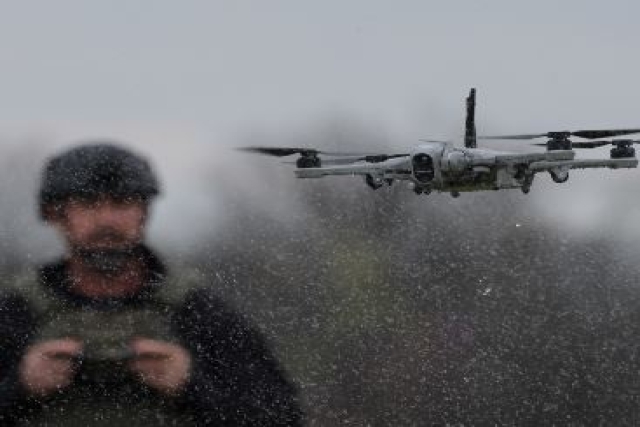Rusia anunció el desarrollo de drones del tipo FPV (First Person View) con capacidad de operar en modo “Hibernación”. Los drones FPV están extraordinariamente difundidos en diferentes ámbitos de empleo civil y militar. Consisten en sistemas UAV con una cámara que transmite video e imágenes, a un operador equipado con dispositivos como gafas o headset especiales que le permiten “ver en primera persona” y en tiempo real, todo lo que el UAV registra. El agregado del modo “hibernación” permite preposicionar el sistema con mucha antelación en determinado sector considerado crítico, activándose a orden para que cumpla una misión específica en el momento necesario. De esa manera, se evita el tiempo de traslado y vulnerabilidad que los UAV presentan en su aproximación al objetivo, incrementándose además su capacidad letal .
Hibernation devices developed for Russia’s Joker family of first-person view (FPV) drones can be pre-positioned for an attack, after which they ‘fall asleep’ for several weeks before being reactivated.
“A drone with a hibernation device can be pre-positioned for an attack and then literally ‘fall asleep’ for several weeks [before being reactivated]. The hibernating drone would not leave an electronic footprint on the airwaves, [thus making it undetectable]. As a rule, commanding heights and rooftops of buildings or other high-rise structures are selected [as pre-positions for drone attacks]. When the time comes [to launch the attack], the drone would not need to traverse the distance to the target, as it would already be pre-positioned and would only need to become reactivated and go into attack mode,” Dmitry Kuzyakin, CEO of Center of Comprehensive Unmanned Solutions told TASS.
The hibernation device enables reducing attack preparation time for drones to the minimal amount possible, Kuzyakin said. “Flight time is saved. Just a few seconds pass between drone reactivation and the attack, leaving [the adversary] no chance to launch anti-drone systems. One FPV pilot can pre-position drones and then ‘wake them up’ and can sequentially deploy up to fifteen ‘sleeper’ drones,” he added.
Fuente: https://www.defensemirror.com


